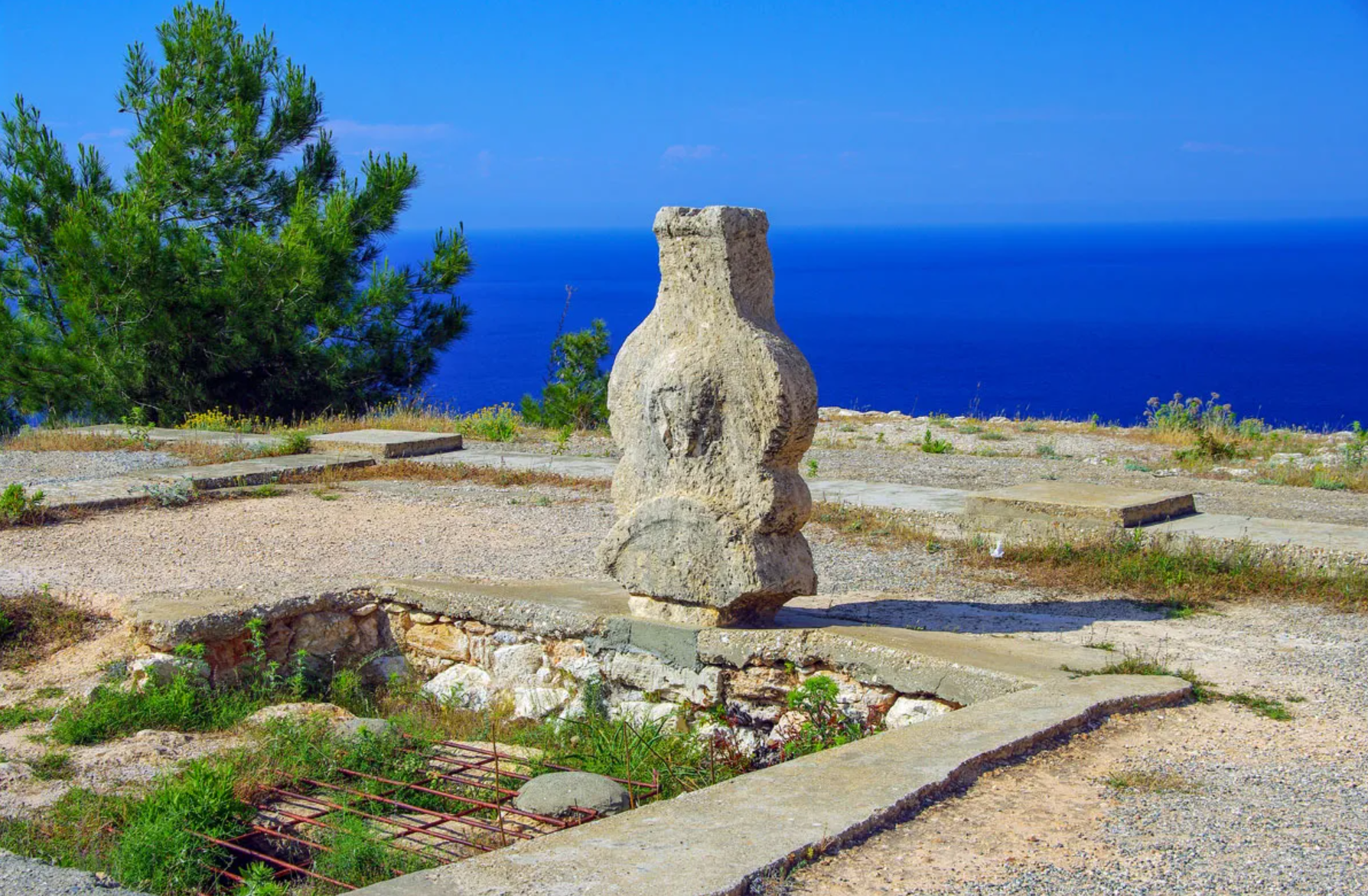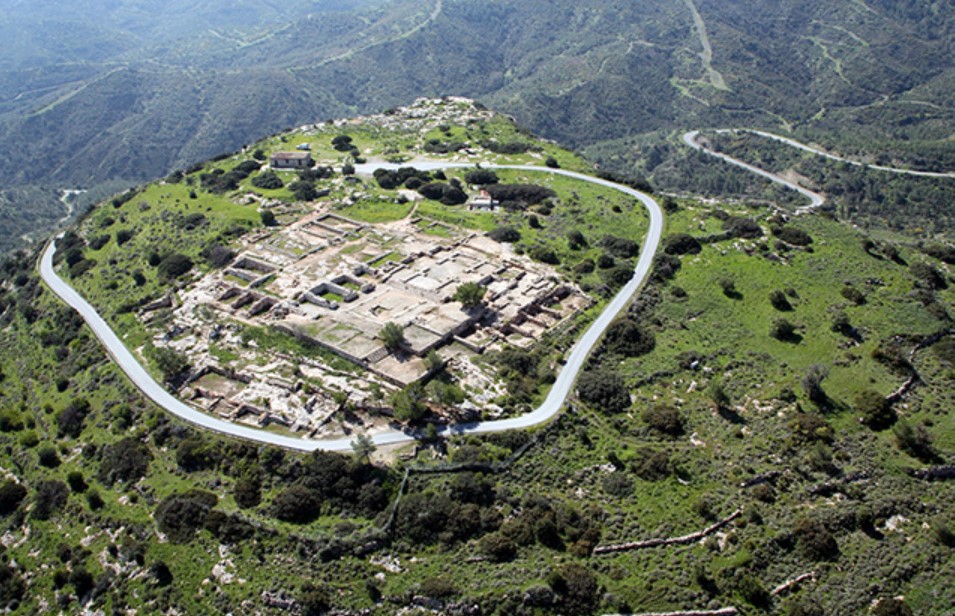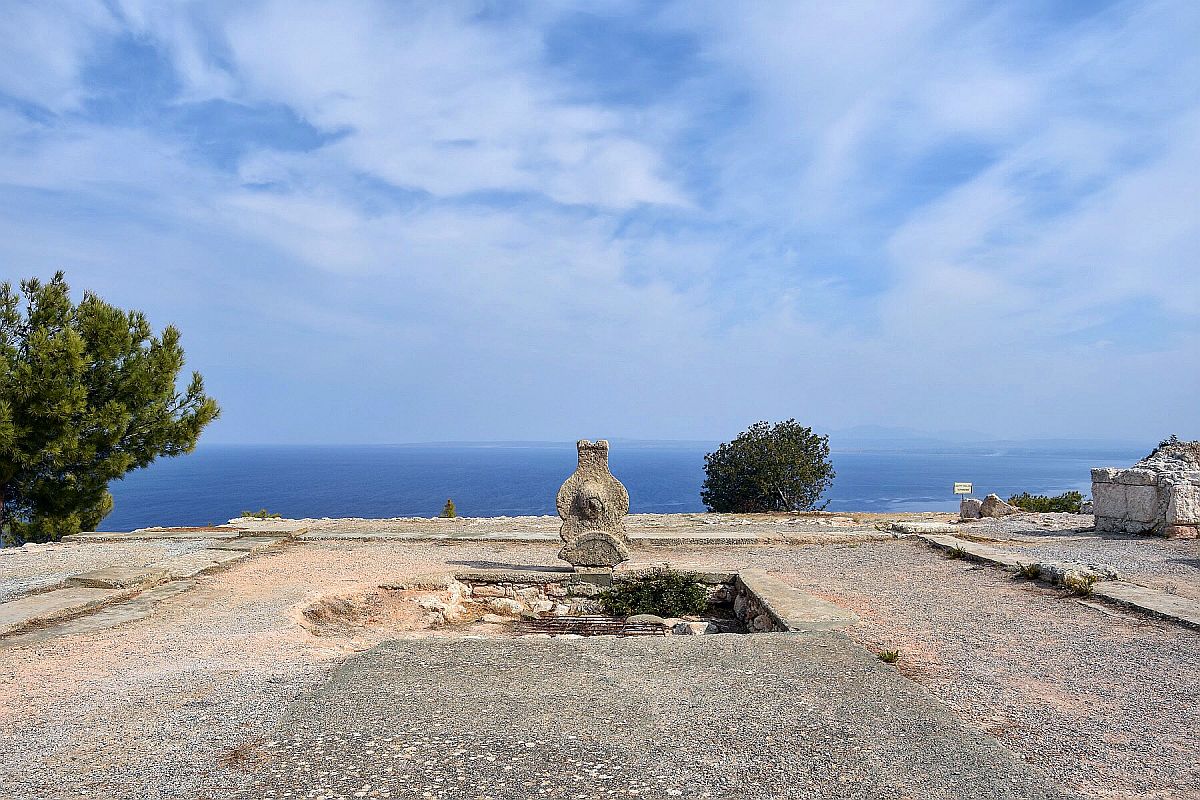


Vouni Palace, which has a privileged place among the examples of buildings built in Cyprus, is the only known historical monument built on the island during the Persian period. The building, built with eastern architecture, has its own characteristics. The courtyard of the Vouni Palace consisted of interconnected columns. Right in the middle of the courtyard, there was a main cistern that met the water needs of the Vouni Palace. Rainwater was collected in cisterns of various shapes in the palace, and the collected water was used in the hot summer months.
Another feature of the courtyard of the Vouni Palace was that it was connected to all the rooms in the palace. Again, the column head made of hard limestone in the courtyard of the Palace is striking. In this column capital was the face of an ancient goddess, Hator, of Egyptian origin. Unfortunately, due to natural conditions, Hator's facial features have not survived to the present day. Again, the 16-meter-wide steps consisting of 7 rows in the courtyard of the Vouni Palace are the widest example of steps in Cyprus with an eastern influence.
Another important work in the Vouni Palace is the Vouni bath, which has survived to the present day. It is the oldest example of a Turkish bath in Cyprus, reflecting the understanding of the cleanliness of the people of that period. The palace was evidently a building of great wealth and luxury, and other than groups of sculptures and works of art, great ‘Vouni Treasures’ have since been discovered. Excavations in the 1920s unearthed a baked clay cup, blackened by the fire which destroyed the palace. Precious commodities like ornamented silver cups and bowls as well as two magnificent gold bracelets rank among the finest known examples of Persian gold work. Hundreds of coins bearing the stamps of the City Kingdoms of Cyprus including Marion are also amongst the valuable findings.
